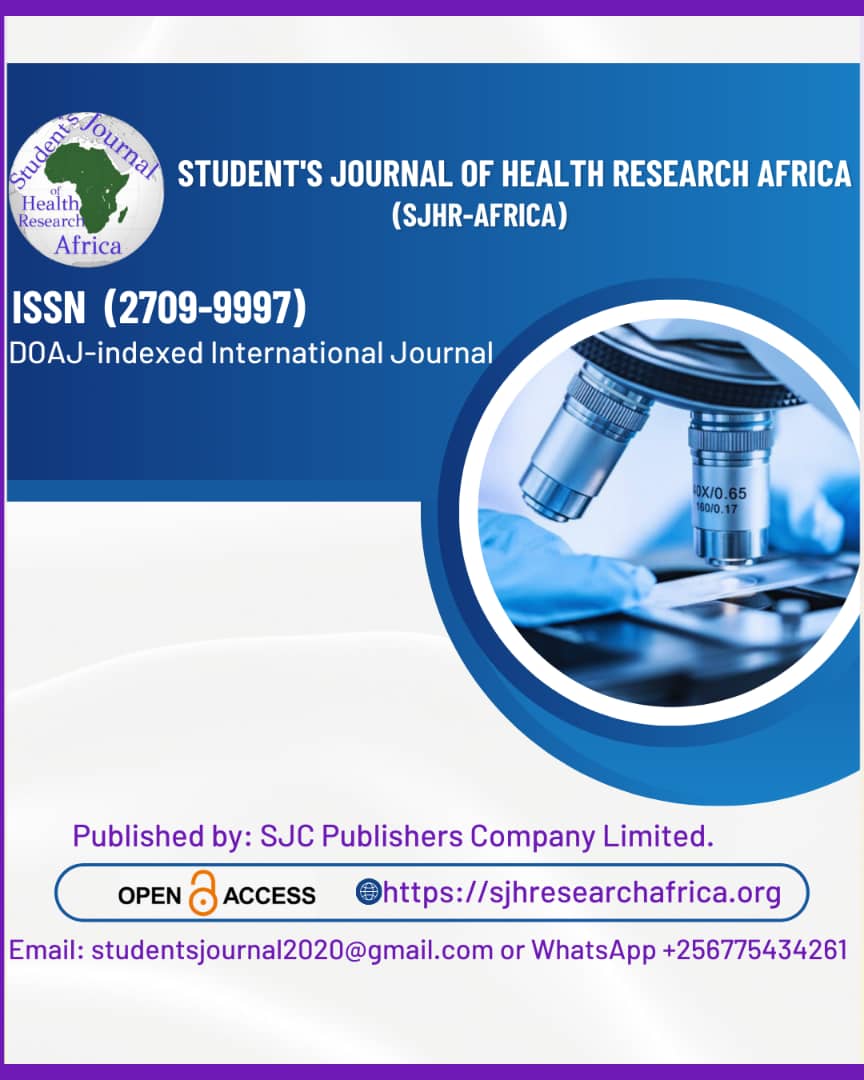Bacteriological and mycological profile of non-tuberculous lower respiratory tract infections in patients attending a tertiary care centre in eastern Bihar: A prospective observational study.
DOI:
https://doi.org/10.51168/sjhrafrica.v6i9.2143Keywords:
Lower Respiratory Tract Infection, Bartlett scoring, multidrug resistant, antimicrobial stewardshipAbstract
Introduction
Acute lower respiratory tract infection (LRTI) is a common clinical illness encountered both in community and hospital settings. Worldwide, lower respiratory tract infections are the leading cause of death. Apart from tuberculosis, pneumonia, bronchitis, and bronchiolitis are the important LRTIs. This prospective hospital-based study was undertaken to identify the microbiological profile and antibiogram of LRTI patients attending our institution.
Aim
To determine the bacteriological and mycological profile of suspected cases of LRTI attending a tertiary care center in Eastern Bihar
Materials and methods
This study was carried out over a period of 3 years. A total of 2107 sputum samples were received in the Microbiology laboratory in Katihar Medical College, Katihar, from July 2022 to June 2025. After doing Bartlett scoring, 1665 samples were processed and included in the study. Identification and antibiotic susceptibility testing of isolates were done using automated methods (VITEK 2) for bacteria and yeasts. LPCB preparation was used for the identification of molds.
Results
Out of the 1665 sputum samples processed, 487 showed the growth of pathogenic organisms. 290 bacterial species, 148 yeasts, and 32 molds were isolated. 17 samples showed mixed growth. The male-to-female ratio was 1.4:1. The Maximum patients (43.15%) were aged 61–80 years, followed by 41–60 years (29.46%). The majority were inpatients from the Department of General Medicine (62.65%).
Conclusion
Gram-negative bacilli were identified as the leading cause of LRTI, followed by yeasts and molds. Many of the isolates were found to be multidrug resistant (MDR).
Recommendation
The increasing rate of isolation of yeasts and molds and the rising incidence of antibiotic resistance a matter of grave concern for one and all. Strict implementation of antimicrobial stewardship is the need of the hour.
References
Collaborators GL. Estimates of the global, regional, and national morbidity, mortality, and aetiologies of lower respiratory tract infections in 195 countries: A systematic analysis for the Global Burden of Disease Study 2015. Lancet Infect Dis 2017;17:1133-1161. https://doi.org/10.1016/S1473-3099(17)30396-1
Bajpai T, Shrivastava G, Bhatambare GS, Deshmukh AB, Chitnis V. Microbiological profile of lower respiratory tract infections in neurological intensive care unit of a tertiary care center from central India. J Bas Cl Pharma 2013 June- Aug;4(3):51-55. https://doi.org/10.4103/0976-0105.118789
Santella B, Serretiello E, Filippis AD, Veronica F, Lervolino D, Dell'Annunziata F et al. Lower Respiratory Tract Pathogens and Their Antimicrobial Susceptibility Pattern: A 5-Year Study. Eds: Albert Figueras, Seokhoon Jeong.2021 Jul 13;10(7):851. https://doi.org/10.3390/antibiotics10070851
Carvalhaes CG, Shortridge D, Woolsey LN, Gurung N, Castanheira M. Performance of the Vitek 2 Advanced Expert System (AES) as a Rapid Tool for Reporting Antimicrobial Susceptibility Testing (AST) in Enterobacterales from North and Latin America. Microbiol Spectr 2023;11(1):e04673-22. https://doi.org/10.1128/spectrum.04673-22
Singh J, Shah A, Parmar H, Duttaroy B. Bacteriological Profile and Antibiotic Susceptibility Patterns in Lower Respiratory Tract Infection at a Tertiary Care Teaching Hospital. GAIMS J Med Sci 2025;5(1):167-174
Khan S, Singh P, Ansari M, Gurung K. Etiological Agents Causing Lower Respiratory Tract Infections in the Western Part of Nepal. Ibnosina J Med BS.2014;6(1):3-8 https://doi.org/10.4103/1947-489X.210353
Singh S, Sharma A, Nag VL. Bacterial pathogens from lower respiratory tract infections: A study from Western Rajasthan. J Family Med Prim Care 2020;9:1407-12. https://doi.org/10.4103/jfmpc.jfmpc_994_19
Gupta E, Siddique S, Khare V.A Study of Bacteriological Profile and Antimicrobial Susceptibility Pattern of Bacterial Isolates in Sputum Samples in a Tertiary Care Hospital.| Int. J. Med. & Allied Health Sci. 2023:3(1). https://doi.org/10.54618/ijmahs.2023311
Dhivya G, R Prabha, Pramodhini S, Joshy M Easow. A bacterial and fungal profile of sputum samples in a tertiary care hospital in Puducherry. Indian Journal of Microbiology Research 2021;8(1):53-57.https://doi.org/10.18231/j.ijmr.2021.012
Debnath S, Bhaumik D, Chakraborty M, Ghosh R, Das L, Bhattacharjee P. Antibiotic sensitivity pattern of bacterial isolates from sputum samples of admitted patients with acute lower respiratory tract infections in a tertiary care teaching hospital of Tripura: a hospital record-based study. Int J Basic Clin Pharmacol 2020;9:254-8. http://dx.doi.org/10.18203/2319-2003.ijbcp20200172
Majh S, Dash M, Mohapatra D, Mohapatra A, Chayani N. Detection of inducible and constitutive clindamycin resistance among Staphylococcus aureus isolates in a tertiary care hospital, Eastern India. Avicenna J Med. 2016;6(3):75-80. https://doi.org/10.4103/2231-0770.184066
Teeraputon S, P Santanirand P, T Wongchai T, W Songjang W, Lapsomthob N, D Jaikrasun D, et al. Prevalence of methicillin resistance and macrolide-lincosamide-streptogramin B resistance in Staphylococcus haemolyticus among clinical strains at a tertiary-care hospital in Thailand. New Microbes New Infect. 2017;19:28-33. https://doi.org/10.1016/j.nmni.2017.05.007
Dinakaran S, Venu A, Sundararajan P, Chandrakesan SD, Nair S, Bhat S. Detection of drug-resistant phenotypes among gram-negative bacterial isolates using Vitek 2 Advanced expert system (AES) IP Int J Med Microbiol Trop Dis . 2024;10(3):289-291. https://doi.org/10.18231/j.ijmmtd.2024.049
Downloads
Published
How to Cite
Issue
Section
License
Copyright (c) 2025 Kahkashan Akhter, Sangeeta Dey, Fasihuzzaman, Priyanka Paul, Aninda Sen

This work is licensed under a Creative Commons Attribution-NonCommercial-NoDerivatives 4.0 International License.





















